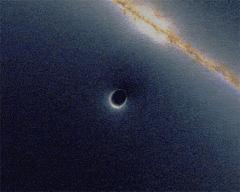What Is Heart Disease?
The heart is the center of the cardiovascular system. Through the body's blood vessels, the heart pumps blood to all of the body's cells. The blood carries oxygen, which the cells need. Cardiovascular disease is a group of problems that occur when the heart and blood vessels aren't working the way they should.
Here are some of the problems that go along with cardiovascular disease:
- Arteriosclerosis (say: ar-teer-ee-oh-skluh-row-sus): also called hardening of the arteries, arteriosclerosis means the arteries become thickened and are no longer as flexible.
- Atherosclerosis (say: ah-thuh-row-skluh-row-sus): a buildup of cholesterol and fat that makes the arteries narrower so less blood can flow through. Those buildups are called plaque.
- Angina (say: an-jy-nuh): people with angina feel a pain in the chest that means the heart isn't getting enough blood.
- Heart attack: when a blood clot or other blockage cuts blood flow to a part of the heart.
- Stroke: when part of the brain doesn't get enough blood due to a clot or a burst blood vessel.
How Do You Get Heart Disease?
Heart disease isn't contagious — you can't catch it like you can the flu or a cold. Instead, certain things increase a person's chances of getting cardiovascular disease. Doctors call these things risk factors.
Some of these risk factors a person can't do anything about, like being older and having other people in the family who have had the same problems. But people do have control over some risk factors — smoking, having high blood pressure, being overweight, and not exercising can increase the risk of getting cardiovascular disease.
What Are the Signs of Heart Disease?
Many people do not realize they have cardiovascular disease until they have chest pain, a heart attack, or stroke. These kinds of problems often need immediate attention and the person may need to go to the emergency department of a hospital.
If it's not an emergency and a doctor suspects the person could have cardiovascular disease, the doctor can do some tests to find out more about how the heart and blood vessels are working. These tests include:
- Electrocardiogram (say: eh-lek-tro-kar-dee-uh-gram). This test records the heart's electrical activity. A doctor puts the patient on a monitor and watches the machine to see the heart beat and determine if it's normal.
- Echocardiogram (say: eh-ko-kar-dee-uh-gram). This test uses sound waves to diagnose heart problems. These waves are bounced off the parts of the heart, creating a picture of the heart that is displayed on a monitor.
- Stress test. For this test, the person exercises while the doctor checks the electrocardiogram machine to see how the heart muscle reacts.
- Catheterization (say: kah-thuh-tuh-ruh-zay-shun). In this test a long, thin tube is inserted into the patient's body to inject a special dye, which can show narrowed areas in arteries due to plaque buildup and find other problems.
- Carotid (say: kuh-rah-tid) artery scan. This test uses sound waves to check for blockages in the carotid artery, a large blood vessel in the neck that supplies blood to the brain.






 During fever the blood flows faster to meet the body's higher energy needs, this is similar to a fast flowing stream. This murmur could be heard in any child with fever and disappears when the fever is over.
During fever the blood flows faster to meet the body's higher energy needs, this is similar to a fast flowing stream. This murmur could be heard in any child with fever and disappears when the fever is over. When the concentration of red blood cells is low, as may happen with poor nutrition, the blood will flow faster, making a murmur. This murmur resolves after treating the anemia.
When the concentration of red blood cells is low, as may happen with poor nutrition, the blood will flow faster, making a murmur. This murmur resolves after treating the anemia.



 A narrow valve is called valve stenosis. The importance of the situation depends on what valve is involved and the degree of the narrowing.
A narrow valve is called valve stenosis. The importance of the situation depends on what valve is involved and the degree of the narrowing.


